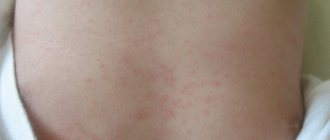Doctors around the world have long discovered that children, especially at an early age, are much more likely to become infected with respiratory infections. Every year, about a billion cases of infection are registered in the world, which is only official statistics. At least half of all children are treated independently by their parents, without seeking medical help1.
Most cases of ARVI in children result in complete recovery, but the course of the disease and its symptoms can cause significant discomfort. Complications and development of chronic forms of diseases are possible. All this dictates the need for preventive measures. In addition to preventing the possibility of infection, preventing acute respiratory viral infections reduces the economic burden of treatment and helps avoid epidemics.
ARVI is familiar and always unpleasant
Most people know that ARVI refers to a huge number of infectious agents. Based on the name, it follows that the causative agent is a virus. There are about 200 different viruses that can cause respiratory infections. The most famous virus that everyone hears about is the flu. By the way, scientists have identified about 2,000 subtypes of influenza, which clearly shows how diverse the world of viruses is2.
It is also necessary to remember that against the background of a viral infection, a bacterial infection may begin to develop. Bacteria especially like to attack a child’s weakened body after a long fight against the virus. Viruses and bacteria often walk side by side3.
If a respiratory disease is caused by bacteria or the doctor is unable to accurately indicate the cause, then the abbreviation ARI - acute respiratory disease - can be used. Interestingly, 70% of acute respiratory infections develop precisely due to viruses entering the body3.
Symptoms for respiratory infections
ARVI manifests itself in the form of:
- deterioration of general condition, weakness, lethargy and drowsiness;
- decreased or lack of appetite;
- tearfulness, whims;
- cough;
- runny nose;
- headache;
- chills, fever.
Symptoms increase gradually, appearing all together or one by one.
Do not worry about the health and safety of your child, even during particularly dangerous periods. Always know where he is now or has been during the day, with whom he has been in contact and who surrounds him, and also instantly contact him if necessary using the “Where are my children” application.
How long does the temperature last?
It is normal if the temperature during ARVI remains at 38 ℃ in the first 3 days. 5 days is the maximum allowable period when a child has a high fever. A high temperature for 5 or more days is indicated by the addition of another bacterial infection. To overcome the infection, you will need a course of antibiotics, the dosage of which can only be determined by a doctor.
What is the difference between influenza and ARVI?
Symptoms by which respiratory diseases can be distinguished from each other:
How is ARVI different from coronavirus?
These acute respiratory viral infections have more similarities than differences. ARVI develops within 2-4 days, while COVID-19 takes almost 2 weeks. The most common symptoms of coronavirus are:
- fever;
- dry cough;
- fatigue;
- dyspnea;
- there is practically no runny nose;
- There is no sneezing.
Causes of ARVI in children
Throughout life, the human body encounters viruses, eventually developing an acquired (specific) immune defense. Children's immunity encounters many infections for the first time and simply does not know how to fight them. This is why children suffer from respiratory diseases much more often. After the first victory over a specific virus, a special defense will be developed, and next time the body will be able to fight back more effectively. In the absence of developed immunity, a special burden falls on general and local immunity, which have also not yet gained adult strength or are weakened due to the cold season or for other reasons3.
The most common causes of respiratory diseases are the following types of viruses3:
- Influenza and parainfluenza virus;
- Adenoviruses;
- Respiratory syncytial virus;
- Rhinoviruses;
- Metapneumovirus;
- Bocavirus.
Transmission of the ARVI pathogen occurs through direct contact with a sick person, or through airborne droplets when inhaling sputum particles containing the virus. Respiratory infections are extremely contagious, especially for children. Sometimes the causes of ARVI in children can be several infections at once, which worsens the course of the disease. Due to a decrease in local immunity, a bacterial infection can enter the upper respiratory tract, which provokes the development of complications in the form of bronchitis, pneumonia or exacerbation of tonsillitis.
Causes of ARVI
The cause of ARVI development is viruses.
When they enter the mucous membrane of the upper respiratory tract, pathogens penetrate the cells and disrupt their normal function. This process is accompanied by local inflammation with hyperproduction of mucus, which leads to a runny nose or cough. Factors that increase the risk of infection are:
- child hypothermia;
- too dry air (under conditions of hyperthermia, the protective function of the mucous membrane of the upper respiratory tract decreases and, accordingly, the aggressiveness of pathogens increases);
- congenital or acquired immunodeficiency;
- malnutrition, prematurity;
- abnormalities of the upper respiratory tract;
- exacerbation of chronic somatic diseases.
The source of infection is a sick person. Viruses are transmitted by airborne droplets and through contaminated personal hygiene items.
Signs and symptoms of ARVI in children
Usually parents themselves are able to detect the onset of the disease in their child. In most cases, the usual cold symptoms4 appear:
- Sore throat and cough. The cough can vary from severe dry to expectorant wet. It is not always possible to explain to a child that he has a sore throat. But this is determined by bad mood and appetite. A strong sore throat is also possible, which causes great discomfort to the baby. Viruses that infect the oral cavity and oropharynx can cause pharyngitis, sore throat, laryngitis, tracheitis, bronchitis, pneumonia and much more.
- Runny nose. The second most pronounced sign means that the viruses preferred the upper respiratory tract and nasopharynx. This is where rhinitis, sinusitis, their chronic forms and other pathologies arise. During a runny nose, breathing through the nose worsens, as the mucous membranes swell. Mucus of various secretions is secreted.
- Heat. An increase in temperature can occur with almost any type of respiratory infection. The body begins to resist and try to defeat the virus, which is reflected by an increase in temperature. However, if the temperature reaches 38ºC or more, it needs to be controlled and antipyretics may be required.
- Deterioration in health. The so-called intoxication of the body also develops as a result of the fight against the virus. Symptoms include headache, decreased activity and lethargy. Children during this period are especially capricious.
Signs of ARVI in infants may differ slightly from classic symptoms. Babies often cry and refuse food. Difficulty coughing can cause mucus to accumulate in the airways. This condition provokes bronchospasm, which is accompanied by wheezing and difficulty breathing. ARVI in infants can be very severe, so in some cases babies are hospitalized.
ARVI symptoms
ARVI is one of the most common pathologies encountered by both children and adults. Every person in the world has encountered this infection at least once in their life. The most typical clinical signs of ARVI in children are:
- increased secretion of mucus from the nose (sometimes it can acquire a yellowish or even greenish tint);
- redness of the sclera;
- tearfulness;
- cough (in the early stages of the disease it is dry, but then becomes productive with coughing up sputum);
- increased body temperature (usual seasonal acute respiratory viral infections are rarely accompanied by a fever of more than 38.5 ° C, however, even such an increase in body temperature can be dangerous for infants and newborns);
- nasal congestion;
- hoarseness of voice.
ARVI should be distinguished from influenza.
The latter is not accompanied by copious nasal discharge, but occurs against the background of severe fever (up to 40°C) and body aches. Most of these symptoms in the early stages are not critically dangerous. But if they are identified, it is worth showing the child to a pediatrician or family doctor to prescribe adequate treatment and prevent the development of serious complications (sinusitis, otitis media, pneumonia).
Treatment of ARVI in children
In the first days of the disease, it is important to relieve painful symptoms as quickly as possible. Children suffer especially painfully from fever and severe runny nose. To alleviate the child's condition, doctors may recommend antipyretic drugs and drugs to combat nasal congestion3.
The virus is short-lived and even in a child’s body lives, as a rule, no more than 7 days. The danger lies in the attachment of a bacterial infection to a viral pathogen. This happens due to a general weakening of the body after fighting the virus and insufficient strength of local immunity. It is important to be treated from the very first days.
With proper treatment, the disease most often ends in recovery without any complications. However, only a pediatrician can correctly assess the condition, identify risks, and select medications and treatment methods.
Treatment and prevention of ARVI in children most often includes3:
- Removing toxins from the body by drinking plenty of fluids;
- Antiviral or antibacterial treatment (if a bacterial infection is attached);
- Taking antipyretic drugs;
- Symptomatic help – fighting a runny nose and cough;
- Additional help for the immune system - walks in the fresh air, ventilation of rooms, hygiene, healthy eating and the use of local immunomodulators.
Treatment of ARVI
ARVI, which occurs without complications, is not a serious problem for an experienced doctor. According to modern recommendations, the following key aspects can be identified in the treatment of seasonal colds:
- Bed rest. Peace for a child is a hall for the rapid restoration of lost strength.
- Drink plenty of fluids. Preference should be given to breast milk (children under 1-2 years old), warm tea, and fruit drinks. The liquid helps remove toxins from the child’s body.
- Complete nutrition. A sufficient supply of protein, vitamins and minerals promotes rapid recovery and complete tissue restoration.
- Taking antipyretic medications (paracetamol, ibuprofen) when body temperature rises above 38.5°C.
If complications develop, the doctor may additionally prescribe antibiotics, vasoconstrictors, and antihistamines.
It all depends on the characteristics of a particular clinical case. “SM-Doctor” is a clinic where pediatricians with over 10 years of experience effectively treat children with any form of ARVI. Our specialists have their own laboratory and access to modern equipment. All this guarantees the highest quality of services provided and improvement of the patient’s well-being in a short time. Contact qualified specialists!
Prevention of ARVI in children
Recently, doctors have been spending more and more money and effort on preventing influenza and ARVI in children. It is possible and necessary to counteract ARVI. Prevention can be specific and nonspecific. Behind the incomprehensible words lie completely logical definitions. Specific prevention is called vaccination, which is familiar to many. Nonspecific prevention got everything else - drug prevention (medicines), vitamin complexes, traditional medicine, hardening and general preventive measures1.
Vaccination
Many people think that there is nothing better than vaccination - one injection and you can forget about the disease, but in reality everything is far from simple. Vaccination is an effective method, but against a specific virus. It is physically impossible to vaccinate a child against all types of viruses during cold season. Doctors especially recommend vaccination against influenza for children and when epidemic outbreaks are predicted, since influenza has the most severe complications6.
Disadvantages of vaccination:
- Vaccination must be done in advance, even if the onset of the epidemic has not yet been recorded.
- Vaccination can only be given to a completely healthy child, otherwise unpleasant complications are possible.
- The effectiveness of vaccinations is high, but it is not universal. That is, vaccination in general does not help against ARVI.
Immunomodulators
Modern immunomodulators are a large group of drugs aimed at stimulating the immune system. The effect on the immune system is achieved in various ways - thymus preparations, interferons, bacterial lysates or plant components. The forms of drugs are also different - tablets, sprays, suppositories, etc. Drugs for the prevention of influenza and ARVI in children are prescribed individually or as part of the fight against an epidemic. Immunostimulants are used both for the treatment and prevention of ARVI6.
Most drugs affect the immune system systemically, affecting the general immunity and thereby increasing the overall defense of the body. However, the infection has a specific location of spread and it is more logical to use topical drugs that stimulate local immunity to fight the infection at the source of infection.
General recommendations
Quite often, doctors give recommendations that help maintain the immune system in working order and help the child survive the cold season6:
- More fresh air;
- Hardening, but not during illness, otherwise complications are possible;
- Physical activity;
- Careful hygiene, especially during periods of illness;
- Maintaining a healthy weight;
- Increasing air humidity in the room where the child is;
- Drinking plenty of water.
Eating healthy foods is always an important and logical factor in resisting colds. Fresh vegetables and fruits (especially citrus fruits) are healthy in themselves; also, during colds, doctors advise eating garlic, berries (cranberries, raspberries and lingonberries), fruit drinks, compotes and herbal decoctions. The main thing is to know when to stop and not to overuse certain types of foods in order to avoid allergic reactions or problems with the gastrointestinal tract.6.
General preventive recommendations may not be enough, in which case drug support is required. Imudon® can act as an effective drug. The medicine has a high degree of safety and is available in a convenient form of lozenges, so it can be easily given to children aged three years and older. The drug helps strengthen the immune system in the throat during periods of increased respiratory disease. When prescribed in complex therapy together with other medications, Imudon® helps speed up the healing process and eliminate sore throat, as well as prevent complications7,8.
About viruses and bacteria
Instructions
More details
1. Lytkina, I. Evaluation of the effectiveness of using a topical immunomodulator for the prevention of influenza and acute respiratory infections in children / I.N. Lytkina, V.A. Pisareva, T.N. Ivanenko, I.L. Shakhanina // Pediatric pharmacology, In pediatric practice - 2009 - VOLUME 6 - No. 6 - P. 65-69. Patient, O.E. Lavrentiev // Vestnik VolSMU.-2007 2. Kazyukova, T. Frequently ill children: modern opportunities for reducing respiratory morbidity / T.V. Kazyukova, G.S. Koval, G.A. Samsygina, N.N. Shevchenko, V.K. Kotlukov, I.V. Pankratov, T.A. Dudina // Pediatrics - 2012 - VOLUME 91 - No. 5 - P. 42-48. 3. Sergeeva, I. Pathogenesis of acute respiratory viral infections and influenza / I.V. Sergeeva, N.I. Kamzalakova, E.P. Tikhonova, G.V. Bulygin // Practical medicine - 2012 - No. 6 (61) - P. 47-50. 4. Sergeeva, I. Immunological aspects of acute respiratory viral infections and influenza / I.V. Sergeeva, N.I. Kamzalakova, E.P. Tikhonova, G.V. Bulygin // Siberian Medical Review - 2012 - P. 2-16. 5. Tatochenko, V. Drug therapy and prevention of influenza / V.K. Tatochenko // Pediatric pharmacology - 2007 - VOLUME 4 - No. 1 - P. 86-89. health of mother and child. 2002 6. Belousov, Yu. Clinical and economic assessment of drugs used for the prevention and treatment of ARVI in children / Yu.B. Belousov, O.I. Karpov, M.V. Leonova, O.V. Efremenkova // Children's infections - 2006 - No. 4 - P. 47-51. 7. Instructions for medical use of the drug Imudon® lozenges from 07/02/2018 8. O. V. Kladova et al., “Clinical effectiveness of Imudon in patients with tonsillopharyngitis against the background of acute respiratory diseases”, Children's infections, 2005, No. 1, c. 55–59. The material was developed with the support of Abbott to improve patient health awareness. The information in the material is not a substitute for healthcare advice. Contact your doctor. RUIMD191614 from 06.26.2019
How to treat ARVI?
If symptoms are detected, you should call a doctor. It’s better to rest at home for a week than to suffer from successive colds all year. The doctor will listen to the complaints of the little patient, conduct an examination, make a diagnosis and prescribe effective drugs for the treatment of ARVI in children. You should not buy medications without a prescription. The specialist will prescribe medications that will not only help you get better faster, but will also not harm your already weakened immune system.
Doctors often prescribe Derinat. The drug is produced in the form of nasal drops for young children, and a spray for older children and adults. The product has a combined effect:
- antiviral - fights the causative agent of acute respiratory viral infection;
- immunomodulatory - strengthens cellular and humoral immunity, increases the body's resistance to infections;
- reparative - restores the damaged mucous membrane of the nasopharynx, closes the “entry gate” for pathogenic agents, and reduces the risk of secondary infection.
Instructions for use can be found in the packaging or on the website. Before taking, consult your doctor.









